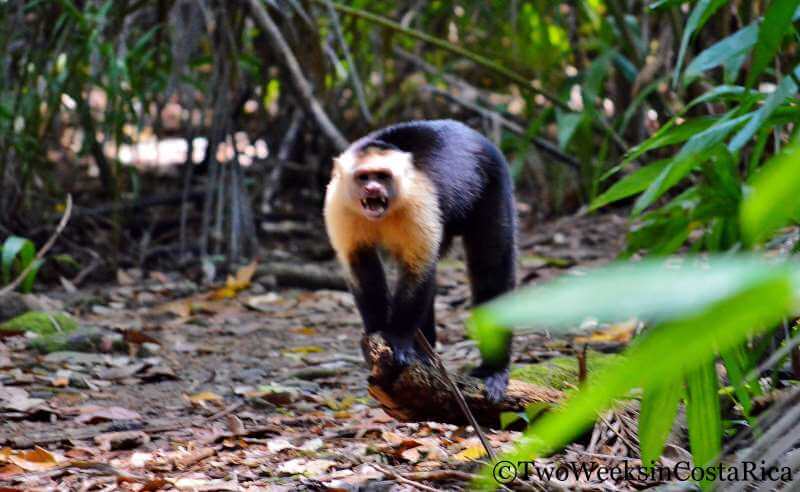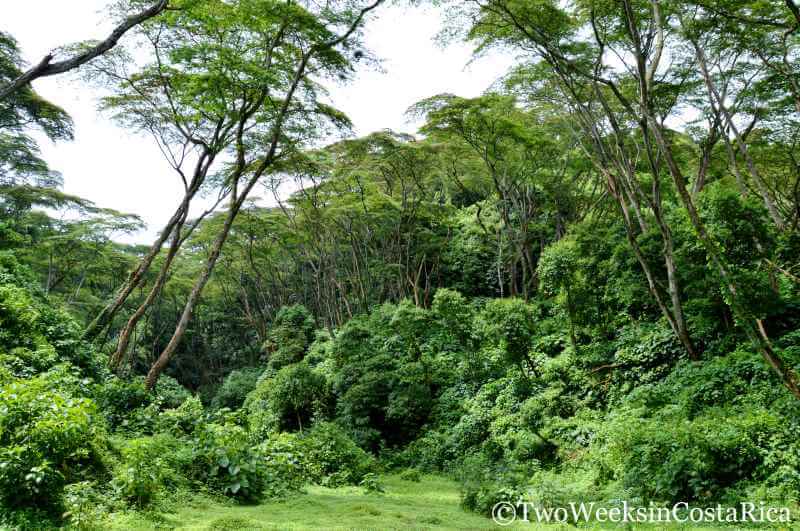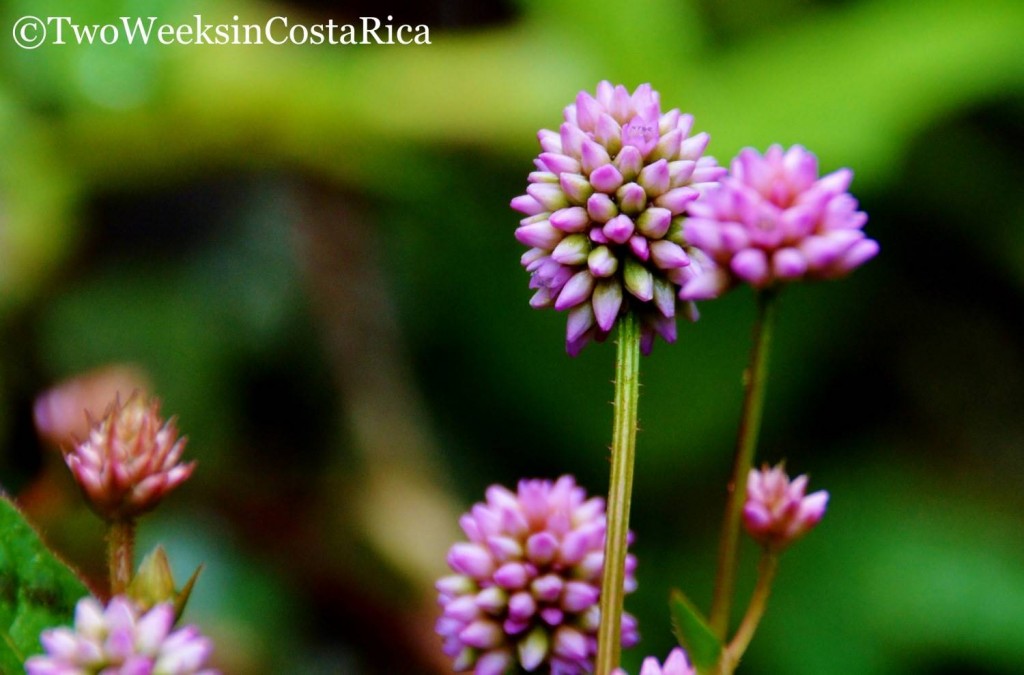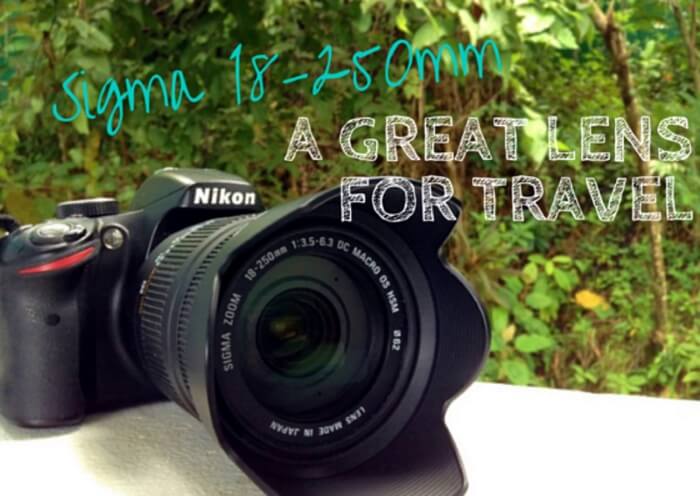What would a travel website be without captivating photos? We wondered that ourselves recently when we found our go-to zoom lens suddenly out of commission. It all happened on a hike to one of Costa Rica’s many hidden waterfalls. Jenn slipped trying to navigate down some slick rocks with a rope; workplace hazard for sure. Luckily no one was hurt, and our Nikon D3200 camera (i.e., Matt’s baby) wasn’t involved in the incident. In fact, the lens that did get damaged was tucked away in a separate bag, waiting to be taken out for some bird photography later on. But the fact that we were carrying around multiple camera lenses at all was the root of our problem.
Our solution is our new lens, the Sigma 18-250mm f3.5-6.3 DC MACRO OS HSM. In our opinion, this lens is a great all-around travel lens and, most importantly for us, solves the problem of having to carry around multiple lenses. But before we go into detail about the new lens, let’s take a look at what we had been using before the incident.
The Old Setup
For the type of photos we use here on our website, we need a wide range of focal lengths. Previously, we used the Nikon 18-55mm for all-around pictures. This was the lens that came with our camera and has treated us well for things like trail pictures, beaches, mountain views, street scenes, and other landscape-type shots. When hiking, we’d usually keep that one on the camera. Then, when we wanted to get creative, or more likely get a close-up of a bird or animal, we’d quickly have to switch to our beloved Nikon 55-200mm zoom lens. While we were fumbling around, switching lenses, all we could do was hope that our subject wouldn’t scurry off, strike some once-in-a-lifetime pose, or worse, attack us while we weren’t looking.

The other bad thing about the old setup was that we often found ourselves changing lenses in what camera experts would say are the worst conditions. Rain and high humidity (it is the tropics, after all), salty ocean sprays, or dust plumes in the dry plains of Guanacaste. All things that are not good for the inside of your camera. At one point, we even had some fungi living under our lens because of all the moisture.
The New Setup
Things are a lot simpler now. With our new Sigma 18-250mm, we only need to bring along one lens wherever we go. Whether we are taking landscape photos, zooming in on wildlife high up in a tree, or even taking macro-type close-ups, we just need the one; no more switching. What drew us to this lens was its big range, from 18mm for those wider angle beach pics all the way to 250mm for the zoomed in bird photos we feature for #FeatheredFriendFriday on Facebook. The macro capability, being able to get really close up shots of things like flowers and insects, was also an added bonus which we hadn’t even considered before finding this particular model.

Before buying, we read many of the reviews on Amazon. With an overall rating of 4.4 out of 5, people seemed to love the Sigma. Another factor was the price. This lens was a big investment for us, costing $349, but when we started looking at replacing our damaged Nikon 55-200mm for $246.95 and still having the problem of switching back and forth, it seemed like an extra $100 well spent.
Performance of Sigma 18-250mm as a Travel Lens
So far we’ve had the Sigma 18-250mm for a couple of months and have taken thousands of photos of all different types of subjects in different lighting and environments.
Landscape Shots
Compared to the Nikon 18-55mm that we previously used for landscapes, we feel that the Sigma lens gives crisper shots with deeper colors that require a lot less editing. It especially picks up Costa Rica’s brilliant greens in the mountains and trees, which sometimes appeared dull with our old lens.

Zoom Capability
Comparing the new lens to our old Nikon 55-200mm, which we loved, we feel that the zoom performance is about equal when shooting birds and wildlife. Much like the Nikon lens, this one sometimes has a hard time auto-focusing in low light condition (e.g., under the tree canopy) and often times is better when manually focusing. We’ve read, though, that this is pretty standard for those types of lighting conditions and the price range of lenses we were looking at.
Macro Feature
We really like the macro capability of the Sigma lens which lets us get really close to objects while still getting a nice, crisp shot. That was tough to do and many times impossible with our old setup where we would have to back up several feet with our zoom lens just to take a picture of a flower.

Drawbacks of Sigma 18-250mm
Small drawbacks are that the Sigma lens is heavier than the individual Nikons we had, and that the zoom sometimes extends out on its own when pointed down. This is a little annoying at times, but not a big deal for us since we are usually shooting upwards into the trees, straight on, or are holding the lens while focusing on something lower. There is a lock so that this won’t happen but it only locks in the fully contracted position (which at least is good while hiking or for storing it away).
Conclusion
Overall we are really happy with the Sigma 18-250mm. Sure, it was a shame to lose our Nikon zoom lens, but when opportunity knocks, buy a better lens, right? For a good all-around travel lens, this one seems to fit our needs perfectly and we are excited to keep getting better and better shots.
If you do end up buying this lens, just make sure that you get the right style/mount to fit your camera. They make different mounts for Nikon, Cannon, Pentax, Sigma, and Sony cameras. Also make sure that you choose the model that specifies Macro as there is an older version without it.
Where to Buy: Amazon
Price: $349
NOTE: Some of the links in this article are connected to affiliate programs. If you buy something on Amazon after clicking one of these links, we’ll get a small commission. This doesn’t cost you anything extra than if you went directly through Amazon and allows us to keep providing content on this website for free. Thanks for supporting us with your clicks!
What’s your go to travel lens? Ever damage your camera gear while out exploring?


